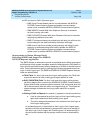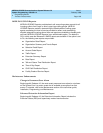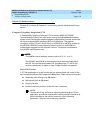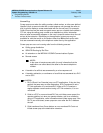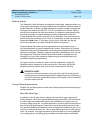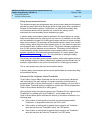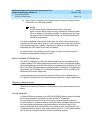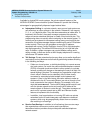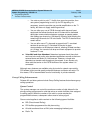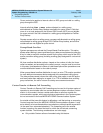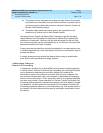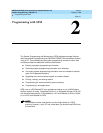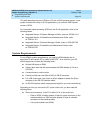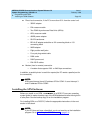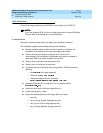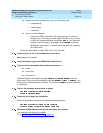
MERLIN LEGEND Communications System Release 6.0
System Programming
555-660-111
Issue 1
February 1998
Programming Basics
Page 1-76Product Enhancements
1
— You order a point to point T1 facility from a service provider, then
use system programming to set it up for PRI signalling. As
necessary, a service provider can provide amplification on the T1
facility, but does not supply switching services.
— You can tailor your use of PRI B-channels with drop-and-insert
equipment that allows fractional use of B-channels for dedicated
data/video communications between systems at speeds greater
than 64kbps per channel or 128 kbps for 2B data, while keeping the
remaining B-channels for PRI voice traffic. The PRI D-channel must
remain active.
— You can tailor use of T1 channels to support both T1-emulated
tandem tie service and T1 Switched 56 service for data
communications at 56 kbps per channel, allowing 2B data transfers
at 112 kbps. You can also use drop-and-insert equipment to provide
fractional T1 use.
■ Voice Mail and Auto Attendant. Networked systems should have their
own local voice mail and/or auto attendant applications as well as their own
external alerts and Music On Hold sources. However, a single auto
attendant can transfer calls throughout the network. It can answer only
those calls that arrive on the PSTN facilities of the system where it is
connected.
Although many features are available using tie trunks for network connectivity,
PRI tandem trunks provide greatly enhanced features and faster call setup. For
this reason, PRI is recommended over tie functionality in private networks.
Group Calling Enhancements 1
Release 6.0 and later systems include Group Calling features that enhance group
calling operations.
Queue Control 1
The system manager can control the maximum number of calls allowed in the
primary calling group queue for calls that arrive on certain facilities often assigned
to calling groups. When the number of the calls in queue reaches the
programmed maximum, subsequent callers receive a busy signal.
Queue control applies to calls received on the following types of facilities:
■ DID (Direct Inward Dialing)
■ PRI facilities programmed for dial-plan routing
■ All calls transferred from a VMI (voice messaging interface) port
■ Dial-in Tie



